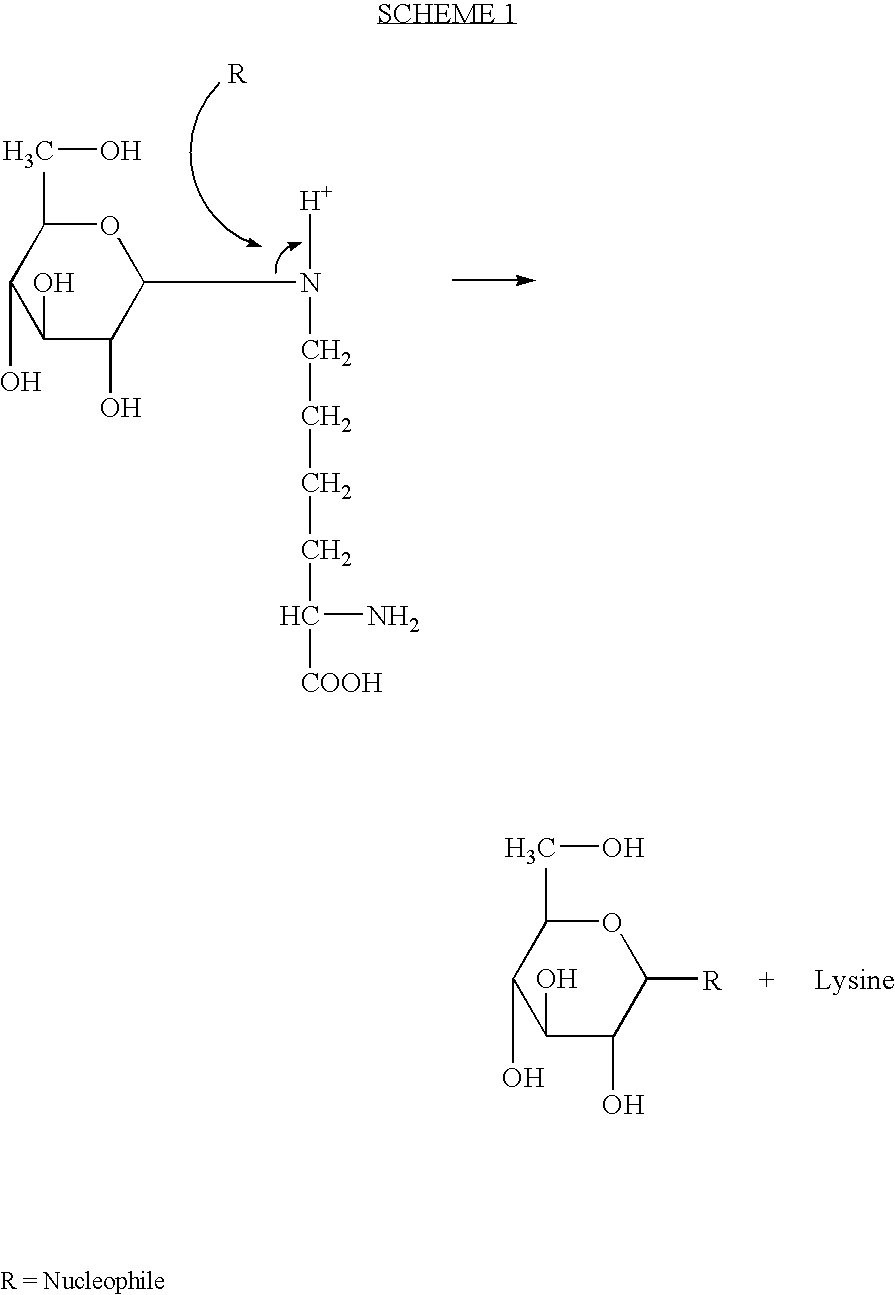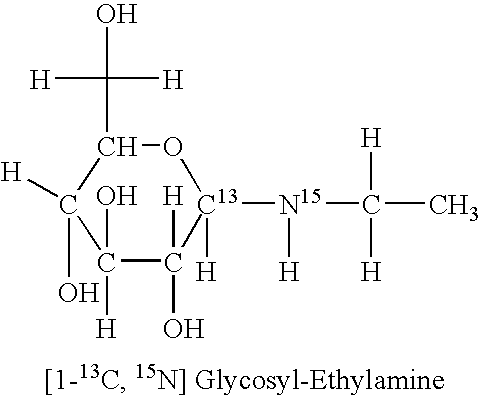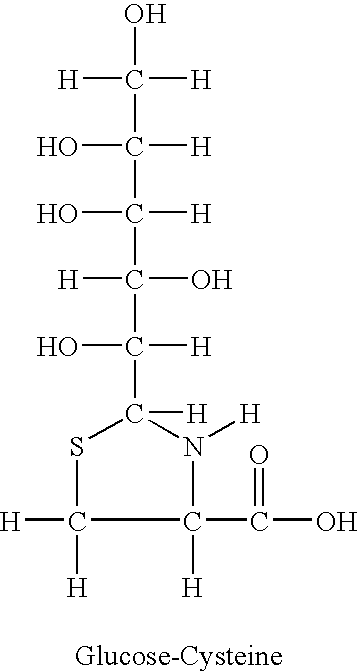Method for inhibiting or reversing non-enzymatic glycation
- Summary
- Abstract
- Description
- Claims
- Application Information
AI Technical Summary
Benefits of technology
Problems solved by technology
Method used
Image
Examples
example 1
Materials
[0018]Glucose-cysteine, 15N ethylamine and other common chemicals were purchased from Sigma, 13C-labeled glucose was obtained from Cambridge Isotopes and Omicron.
example 2
Glucose-Ethylamine
[0019]Glucose-ethylamine (G-E) was synthesized by incubating 2 M [1-15C] glucose and [15N] ethylamine for 3 hours at pH 12 and 37° C. At the end of the incubation period, about 75% of the starting material was converted to glucose-ethylamine existing in equilibrium with the starting materials.
example 3
Transglycation with Amines and Thiols
[0020]The reaction mixture (0.5 ml in a 5 mm NMR tube) included 250 mM HEPES, pH 8.5, 10% D2O (for the purpose of locking the NMR magnetic field) and 50 mM concentration of a nucleophile of interest such as taurine. The reaction was performed at room temperature and it was initiated by adding an aliquot of G-E to a final concentration of 20 mM at which time consecutive 1H-decoupled, 13C NMR spectra of 20-minute duration were acquired using 580 scans, 60° pulses with NOE-decoupling and an interpulse delay of 2.065 seconds.
PUM
| Property | Measurement | Unit |
|---|---|---|
| Fraction | aaaaa | aaaaa |
| Fraction | aaaaa | aaaaa |
| Fraction | aaaaa | aaaaa |
Abstract
Description
Claims
Application Information
 Login to View More
Login to View More - R&D
- Intellectual Property
- Life Sciences
- Materials
- Tech Scout
- Unparalleled Data Quality
- Higher Quality Content
- 60% Fewer Hallucinations
Browse by: Latest US Patents, China's latest patents, Technical Efficacy Thesaurus, Application Domain, Technology Topic, Popular Technical Reports.
© 2025 PatSnap. All rights reserved.Legal|Privacy policy|Modern Slavery Act Transparency Statement|Sitemap|About US| Contact US: help@patsnap.com



